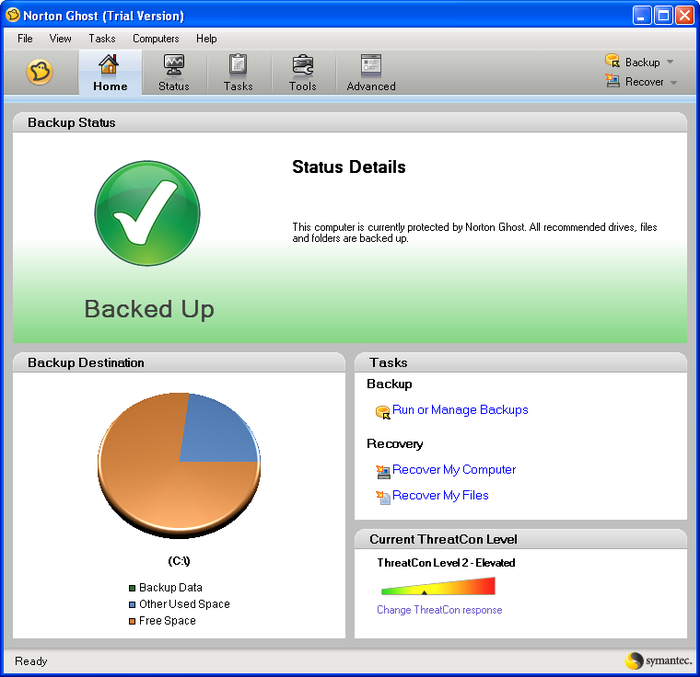

- #NORTON GHOST DOES NOT SEE DRIVE ARCHIVE#
- #NORTON GHOST DOES NOT SEE DRIVE SOFTWARE#
- #NORTON GHOST DOES NOT SEE DRIVE ISO#
- #NORTON GHOST DOES NOT SEE DRIVE DOWNLOAD#
Choose from the list on the screen a location where you'd like the backup file you're about to create to be stored.Select from the list on the screen the exact hard drive that you'd like to copy using Norton Ghost 11.
#NORTON GHOST DOES NOT SEE DRIVE ARCHIVE#
Click 'To Image.' This will create a single archive file that contains all of the data on the drive you're copying. Click 'Partition,' even if your computer has not been separated into different partitions (or 'portions'). This means that the hard drive you want to copy is inside the computer you're using. Norton Ghost 11 5 DownloadĬlick the 'Local' option.
#NORTON GHOST DOES NOT SEE DRIVE SOFTWARE#
Quickly and easily migrate to the latest operating systems, perform custom configurations and deploy software across hardware platforms and operating systems. Symantec Ghost Solution Suite is an award-winning software solution for imaging and deploying desktops, laptops, tablets and servers. Maybe they have that package yet somewhere on their FTP servers. I think you have to contact Symantec - Ghost is part of their company (was at least till recent days).
#NORTON GHOST DOES NOT SEE DRIVE ISO#
This option will allow you to copy the contents of the computer you're working on to a different hard drive.Ĭreating Ghost 11 Bootable Disk or ISO file. Instead of seeing the Windows logo, you'll see the Norton Ghost logo.
#NORTON GHOST DOES NOT SEE DRIVE DOWNLOAD#

It's pretty clear you're using the graphical shell, as if Ghost is a standard program from your hard drive.SETH MACFARLANE Does FAMILY GUY & KERMIT The Frog Voices - The Graham Norton Show on BBC AMERICA - Duration: 6:27. My question #4 was asking whether you were working with Ghost from the graphical shell, or as a batch process using the DOS based client. If the external drive is writable in Windows, then the problem is likely procedural to Ghost, and there could be a number of issues causing that error. Can you copy/erase a small test file to that drive from Windows Explorer, thus proving that it is writable? Can you do a chkdsk on your external drive, too, and see if it is error free? If you can do those things successfully, at least you know that the external drive is working at a low level using Windows drive routines, but if it doesn't work in those tests, then Ghost is going to be unable to access the drive until you sort out whatever is stopping communication. That was the point of my asking about your File System (FS) on that drive. We don't know, yet, that it sees your external USB drive as a writable device. Your replies to 1, 2 and 3 tell us that Ghost isn't quitting for basic target or sizing errors.


 0 kommentar(er)
0 kommentar(er)
